January 27 is International Holocaust Remembrance Day. This year, January 27, 2020 commemorates the 75th anniversary of the Soviet forces liberation of Auschwitz-Birkenau Forced Labor and Extermination Camp in the final months of World War Two.
U.S. population surveys indicate nearly half of U.S. adults could not name a single World War Two concentration camp. Even more telling is 66% of Millennials could not correctly describe Auschwitz as a concentration camp (22%), death/extermination camp (11%) or forced labor camp (2%).
Auschwitz is generally the most recognized name among hundreds, even thousands of World War Two concentration camps due to its sheer size and large number of prisoners killed, estimated to be around 1.1 million over the course of five years of war from 1940-45. In July 2018, Kelley and I visited Auschwitz-Birkenau Memorial Museum in Oswiecim, Poland. Prior to this visit, I had encountered many other reminders of the Holocaust in several other countries.
Berlin, GermanyÂ
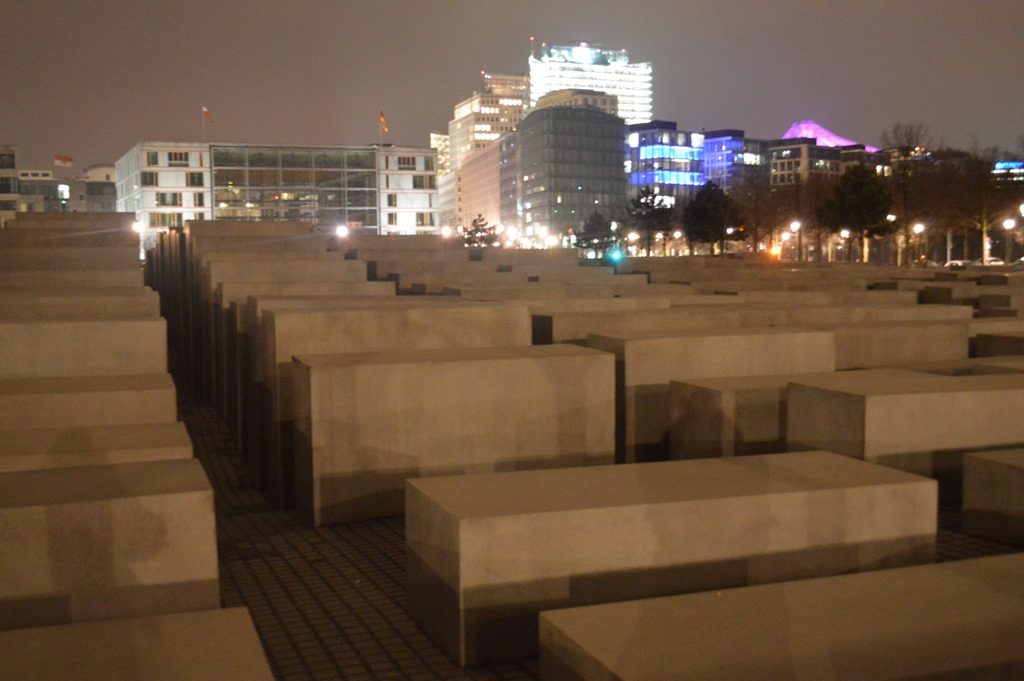
Night Walking through Berlin Blocks is a piece of poetry I wrote primarily contemporaneously around midnight on a chilly winter night sitting on a stelae of The Memorial to the Murdered Jews of Europe, a place I unexpectedly encountered the first time during a Friday late night walk through central Berlin.
The memorial attracted me to return again on my last day after a week in Berlin.
Berlin Blocks II – Daytime photos of The Memorial to the Murdered Jews of Europe and Memorial to the Sinti and Roma of Europe Murdered under National Socialism.
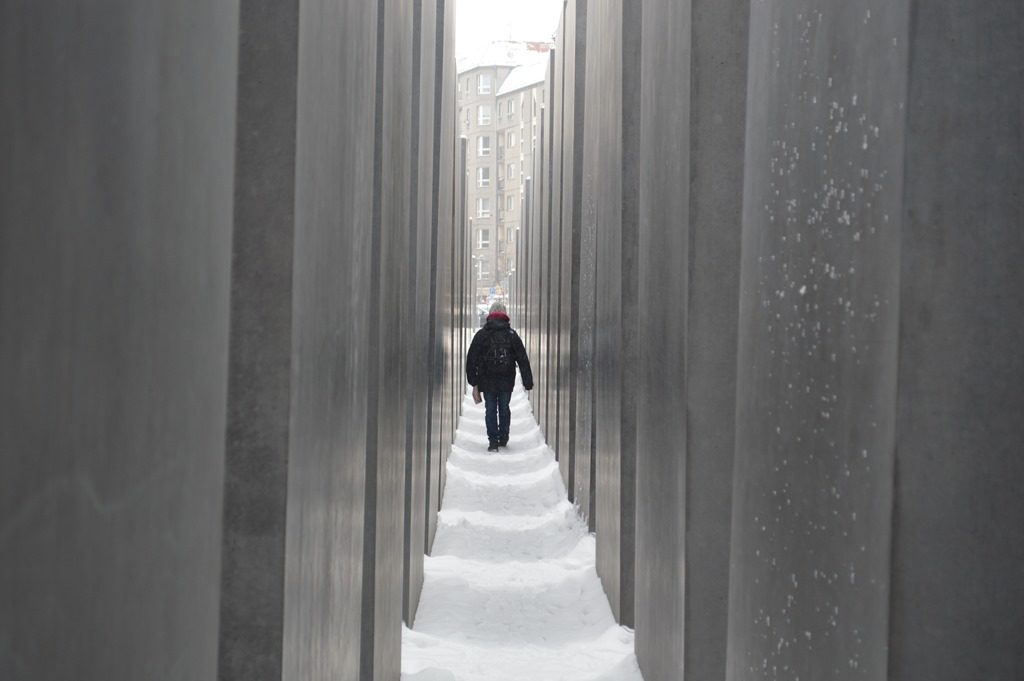
Amsterdam, NetherlandsÂ
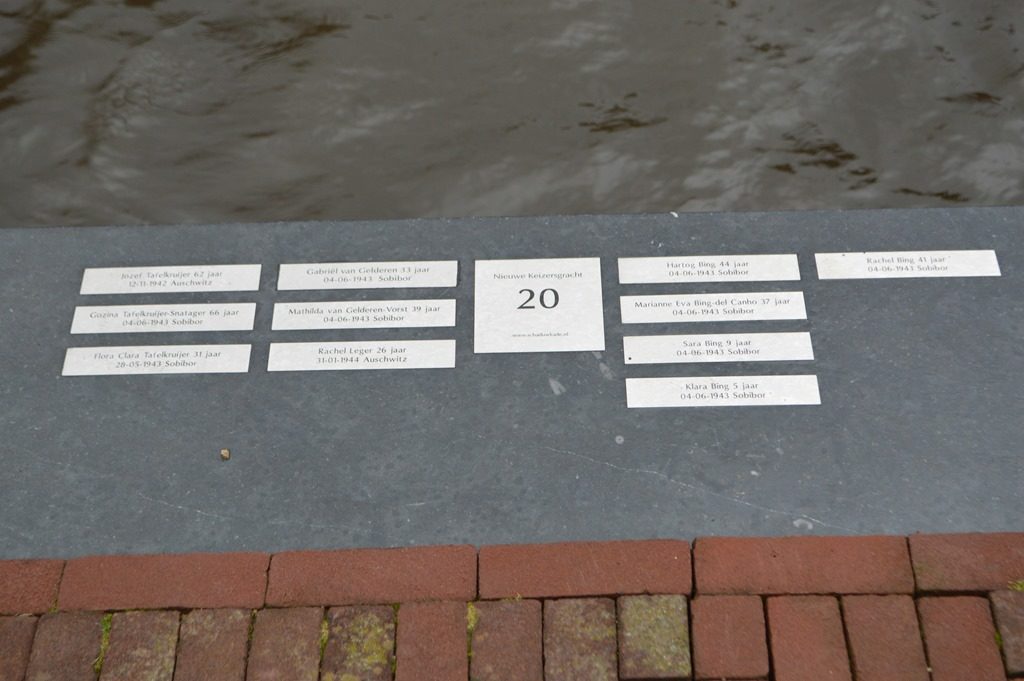
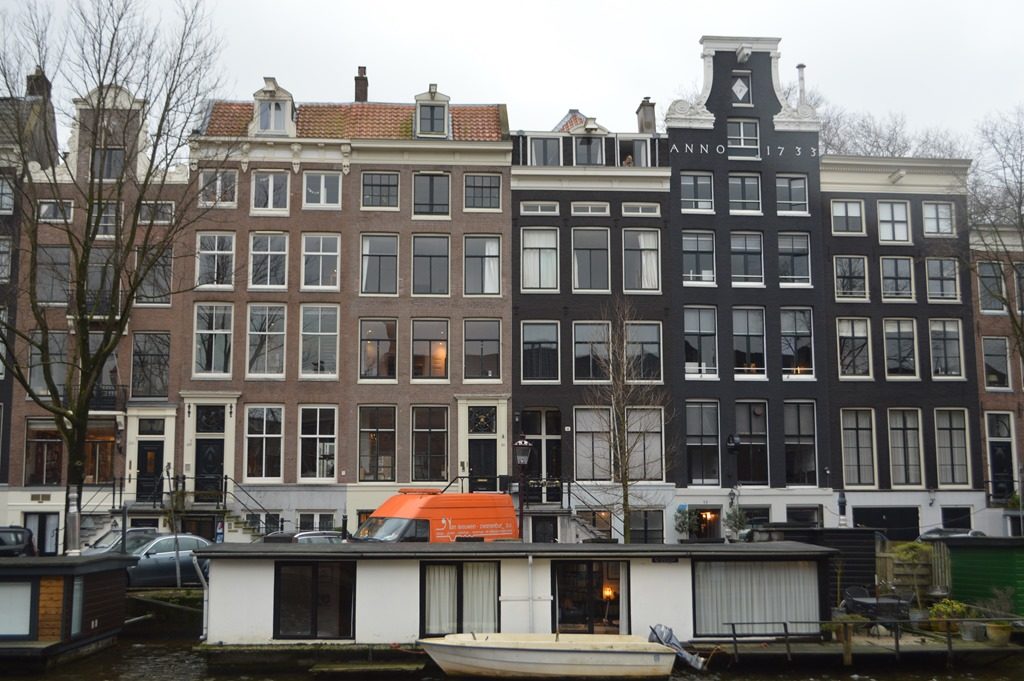
The Jodenburrt Jewish District of Amsterdam, historically established in the early 1600s was decimated under German occupation during World War II when the Jewish population declined from around 80,000 in 1940 to under 5,000 residents in the years after the war.
The Jodenbuurt Schaduwkade-Shadow Wall Amsterdam is a subtle, yet powerful memorial consisting of plaques on granite stones forming the canal wall edge of Nieuwe Keizersgracht in Jodenburrt – The Jewish Neighborhood. Standing over a simple plaque with a house address, names of residents, and their date and concentration camp location attached to each person’s name showing when and where they died during World War II. Place names like Auschwitz (Poland), Sobibor (Poland), Mauthausen (Austria) are just a few names of the thousands of forced labor and extermination camps operated by the Nazi Regime during World War II.
The powerful aspect of the Schaduwkade is looking up to see the residential buildings across the canal, the homes where these people of Jewish faith had lived until imprisoned by the Nazis.
Kosice, Slovakia
Slovakia forms most of the northern border of Hungary. Kosice is Slovakia’s second largest city after the country’s capital Bratislava. Kosice is in the eastern part Slovakia, located only 15 miles north of the Hungary border.
What I did not know at the time I was in Kosice was the World War Two historical alliances had placed Slovakia and Hungary as members of the Axis, politically and militarily supporting Hitler’s regime. Hungary’s army was decimated in the Battles of Stalingrad against Soviet forces. In 1943 the Hungarian government began secretly negotiating an armistice with U.S. and U.K. leaders. Upon learning of Hungary’s deceit, Hitler’s forces invaded Hungary in March 1944. About 430,000 Hungarian Jews, who had mostly evaded the Nazi concentration camps up to this point, were subjected to extensive roundups and transported to Auschwitz in a series of convoys from May 15 to July 9. About 75% of these Jews were murdered upon arrival at Auschwitz-Berkinau.
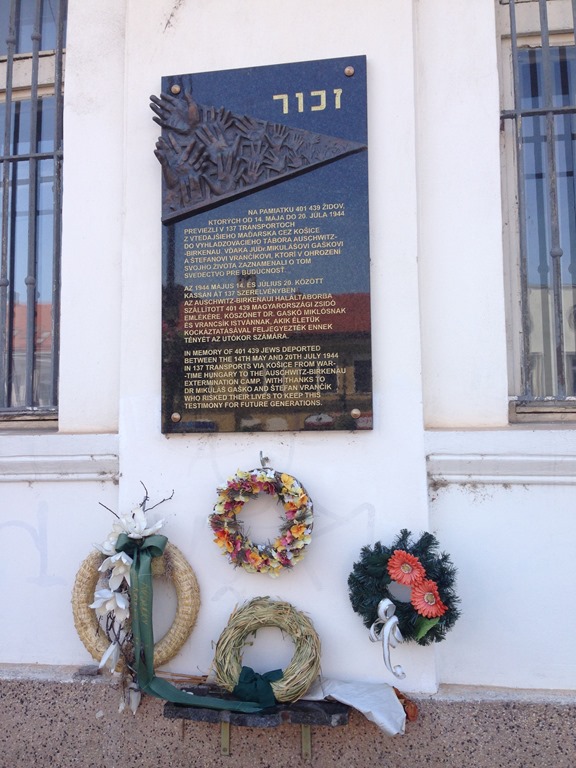
“In memory of 401,439 Jews deported between the 14th of May and 20th July 1944 in 137 transports via Kosice from war-time Hungary to the Auschwitz-Birkenau Extermination Camp.”
New Jewish Cemetery, Prague, Czech Republic
In April 2019 I took Kelley to visit the New Jewish Cemetery in Prague. The large cemetery space, along with the neighboring Olsany Cemetery makes for a lovely green space walk in the city with a significant amount of history to be learned from grave markers. Many of the grave markers simply state “Zahynuli v koncentracnim Tabore” or “Perished in a concentration camp”. Other stones list camp and date of death. Many of the family grave markers share names of both Prague residents of the past 150 years, along with family members who perished in the Holocaust.
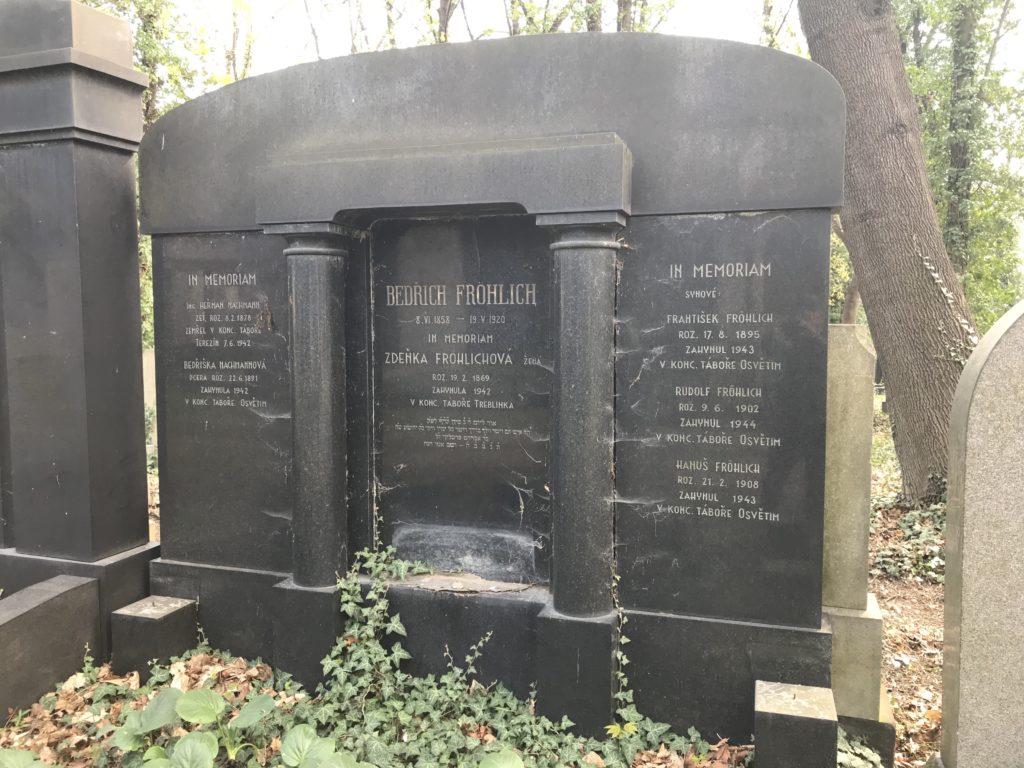
Bedrich Frohlich 1858-1920
Zdenka Frohlichova 1869-1942 perished in Treblinka Concentration Camp.
Frantisek Frohlich 1895-1943 perished in Osvetim (Auschwitz-Birkenau Concentration Camp, Oswiecim, Poland).
Rudolf Frohlich 1902-1944 perished in Osvetim (Auschwitz-Birkenau Concentration Camp, Oswiecim, Poland).
Hanus Frohlich 1908-1943 perished in Osvetim (Auschwitz-Birkenau Concentration Camp, Oswiecim, Poland).
Herman Nachmann 1878-June 7, 1942 died in Terezin Concentration Camp (Theresienstadt, Czech Republic).
Bedriska Nachmannova 1891-1942 perished in Osvetim (Auschwitz-Birkenau Concentration Camp, Oswiecim, Poland).
Warsaw, Poland
In 2019 I stayed two times at Holiday Inn Warsaw City Centre. There is a monument outside the hotel and a demarcation in the sidewalk showing where the gate to the Jewish Ghetto had been erected during World War Two.
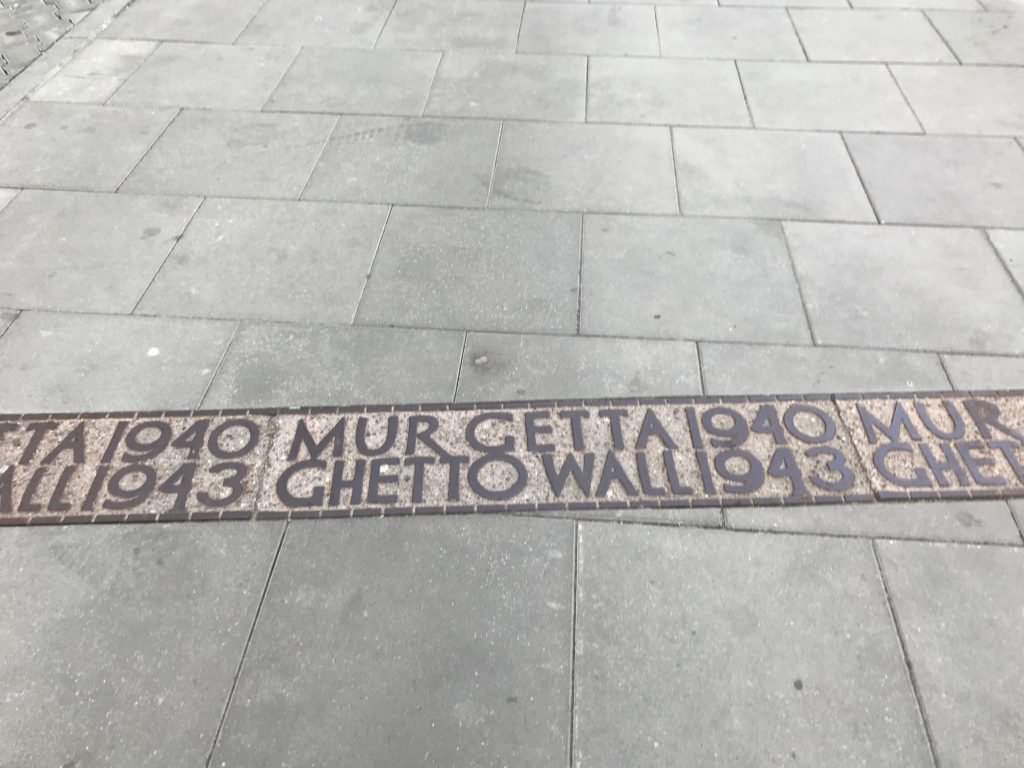
Oswiecim, Poland – Auschwitz Memorial and Museum
Most visitors to Auschwitz make it a day trip from Krakow. We stayed two nights at the new Hampton Inn Oswiecim on $50 per night rate and visited Auschwitz via a 30-minute walk from the hotel.
- Hampton Inn Oswiecim on a trip to Auschwitz
- Auschwitz-Birkenau tour in photos
- Tour of Auschwitz slideshow video
- *Oswiecim video


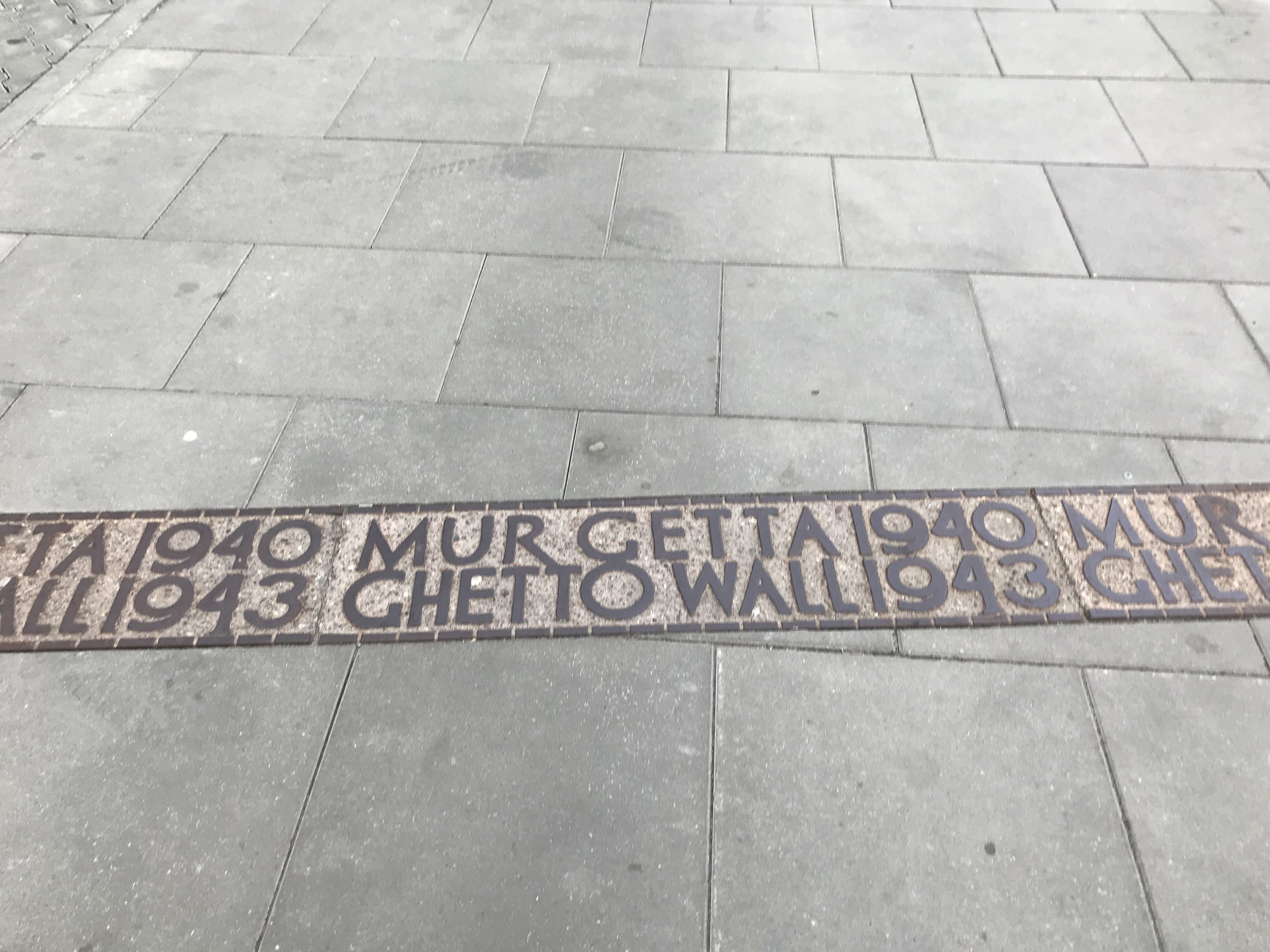

2 Comments
Comments are closed.